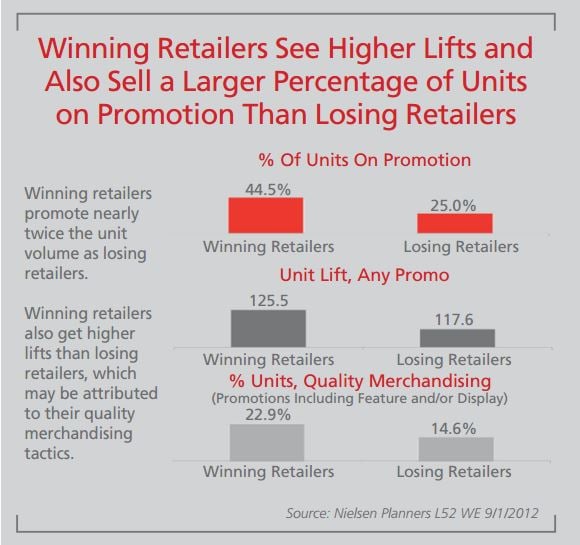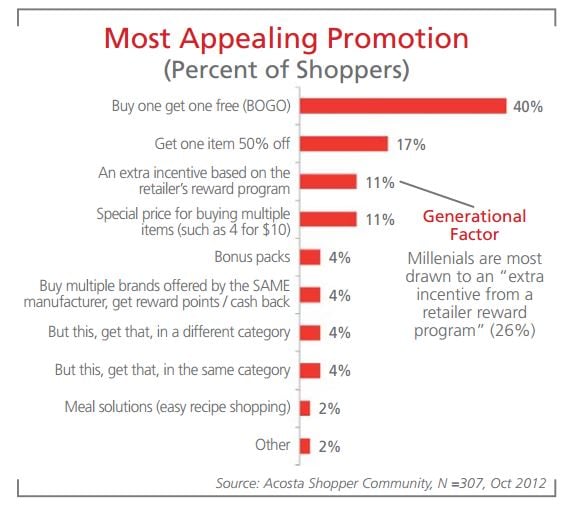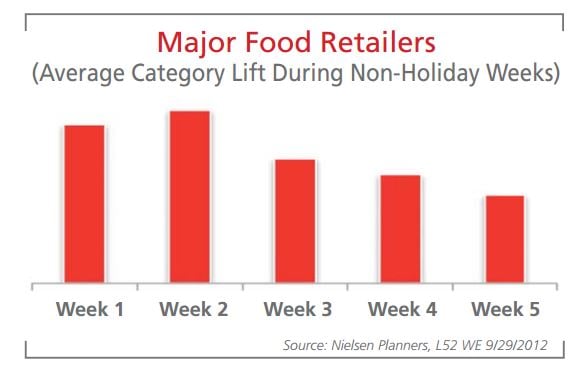No brand is immune from competition. To stay afloat, suppliers need to view their relationship with retailers as a strategic partnership. A well-designed trade promotion allows both retailers and suppliers to experience success on the shelf.
When executed properly, trade promotions can add 10-15% to the bottom line, according to research conducted by PwC. To ensure the best ROI for their trade spend, companies should hone in on pricing and in-store displays. Read on for examples of trade promotion best practices.
1. Pricing
Experimenting with temporary price reductions (TPRs) can have a dramatic impact on sales promotion activities. A special report compiled by Acosta Strategic Partners on trade promotions indicates their ability to drive unit sales.

It’s important to understand that certain product categories have a higher response to price changes than others. Nielsen reports that essential items such as toilet paper, along with ready-to-eat foodstuffs are more sensitive to TPRs than other CPG products. Essentially, faster-moving, stockable items are more inclined to reap the rewards associated with TPRs.
Also notable is the fact that products with a unit price under $5 experience greater movement off the shelf as a result of promotional pricing. In other words, large discounts drive large volume sales. TABS Analytics suggests offering at least a 20% discount.
Another valuable trade promotion pricing tool is multiples, bundles, and BOGO. There is perceived value to the consumer in getting something “for free.” “A 2 for $5 is more effective vs. $2.49 each. If you have a 2-for, you will almost guarantee every customer will buy the multiple”, reports Perry Abbenante, VP of Marketing for Pretzel Crisps. Below is an analysis of how consumers react to different types of promotional offers:

Finally, consider the role of scheduling in sales promotions. Acosta’s research reveals that the first two weeks of the month provide greater results than the latter half of the month. Moreover, running a promotion at a different time than a competitor is equates to 60% higher lift.

2. In-Store Display
Research has confirmed that approximately 66% of all purchase decisions are made in the store. Moreover, one study found that for every $1 spent on in-store displays there was an average return of $3.18 incremental sales dollars. Hence, point of purchase (POP) promotions empower brands to drive impulse buys.
Some of the best promotion techniques for in-store displays are as follows:
- Size matters - a large display is more likely to stop shoppers in their tracks.
- If a display is is within 15 feet of the entrance, it’s less likely to get noticed by customers.
- Understand the role of color on off-fixture displays. Monochromatic color schemes should be avoided as they are less visually appealing.
- Try including unique shapes to stand out.
- Incorporating an interactive element such as a touchscreen or video can be more engaging than flat imagery.
- Lighting should be used strategically draw attention to the in-store display.
- “Do not touch” signs can deter purchases.
- Actionable copy on promotional displays can be impactful. Try using phrases such as “Sale: Today Only” or “New! Won’t Last Long.”
Trade promotions can be a brand’s secret weapon to boosting sales. Perry advises that “in-store promotions are a key element of a successful brand, and without them the brand will fail.” By mindfully utilizing pricing offers and in-store displays, companies can maximize profits and accrue loyal customers.







